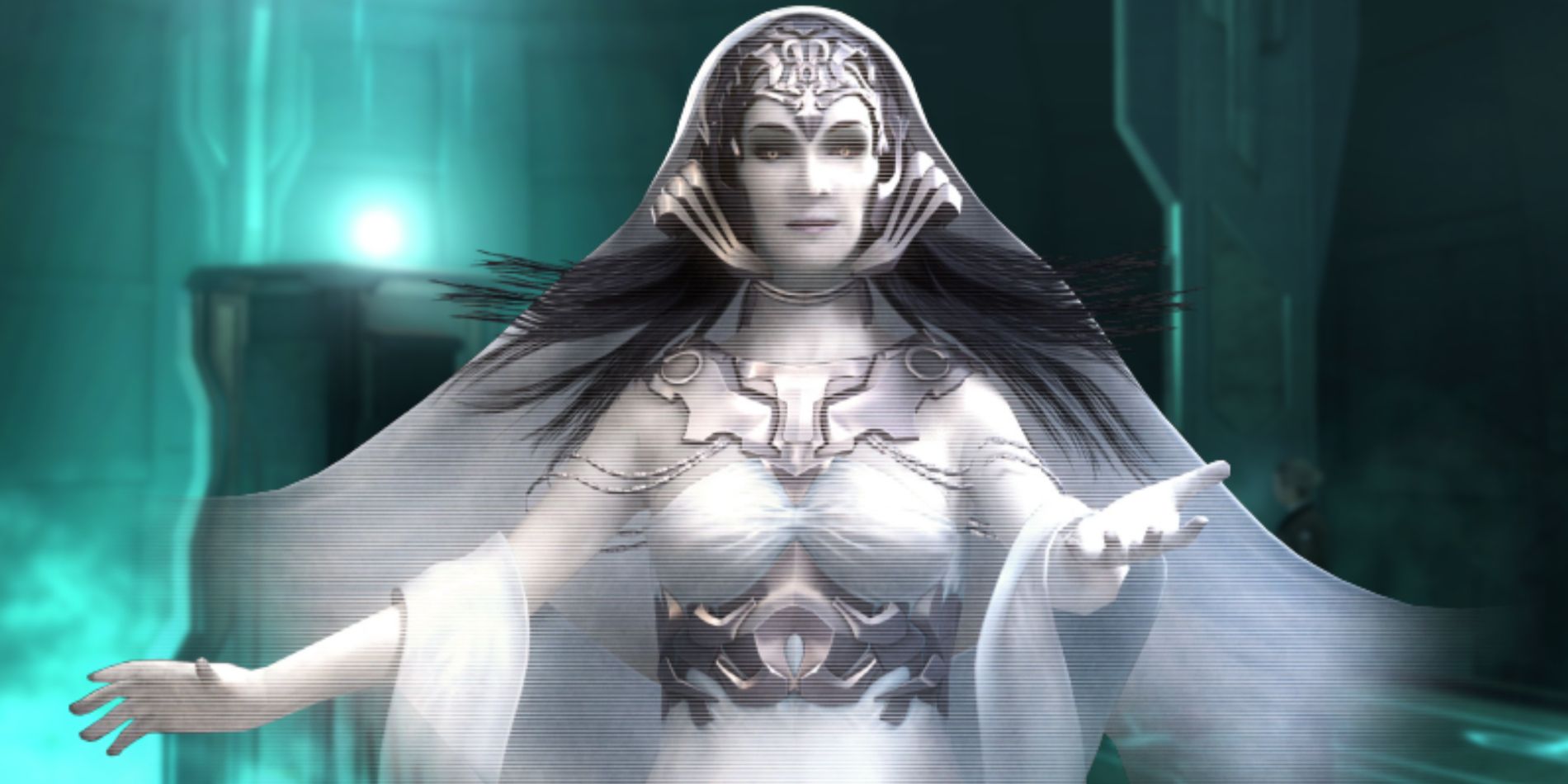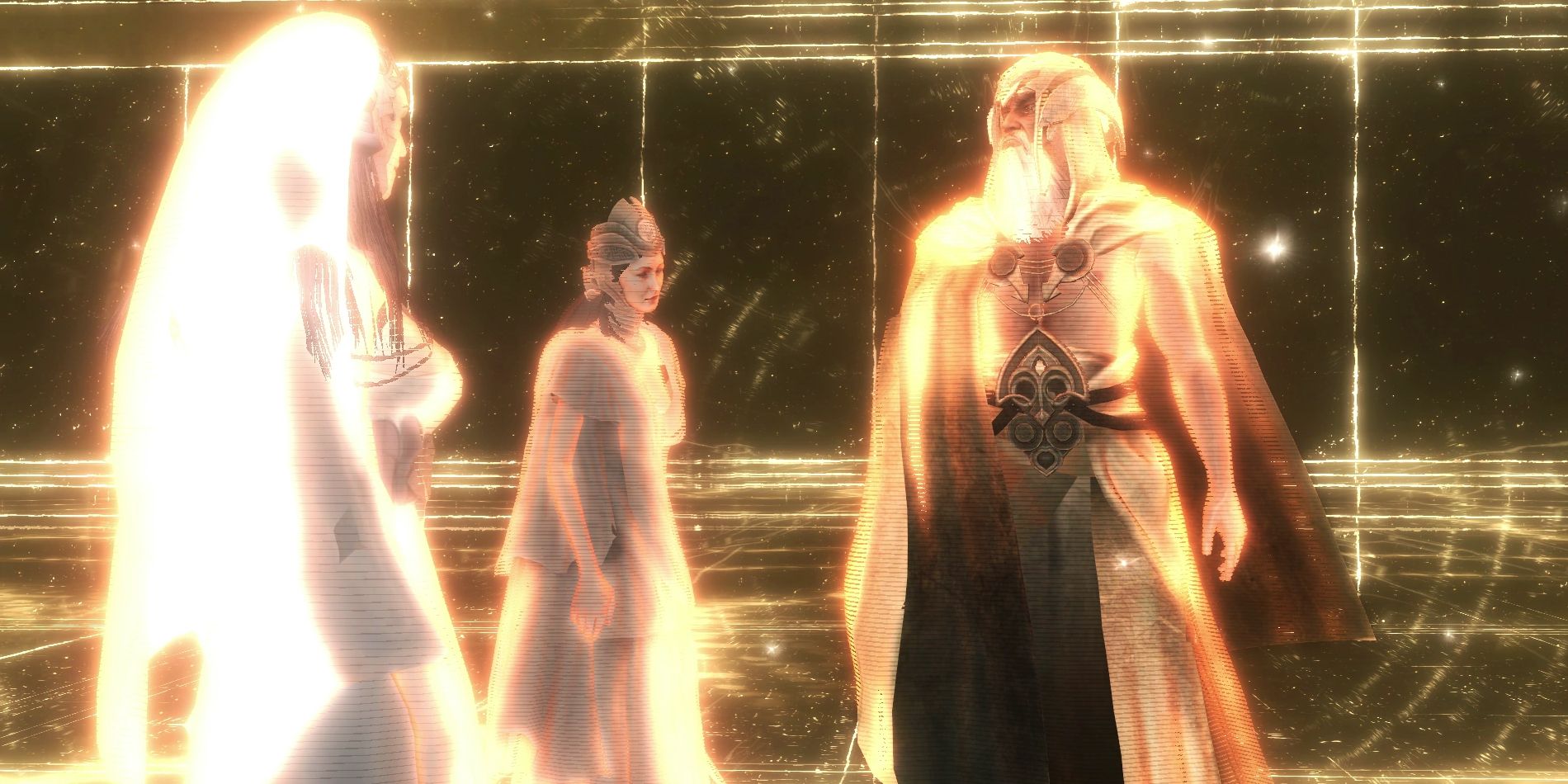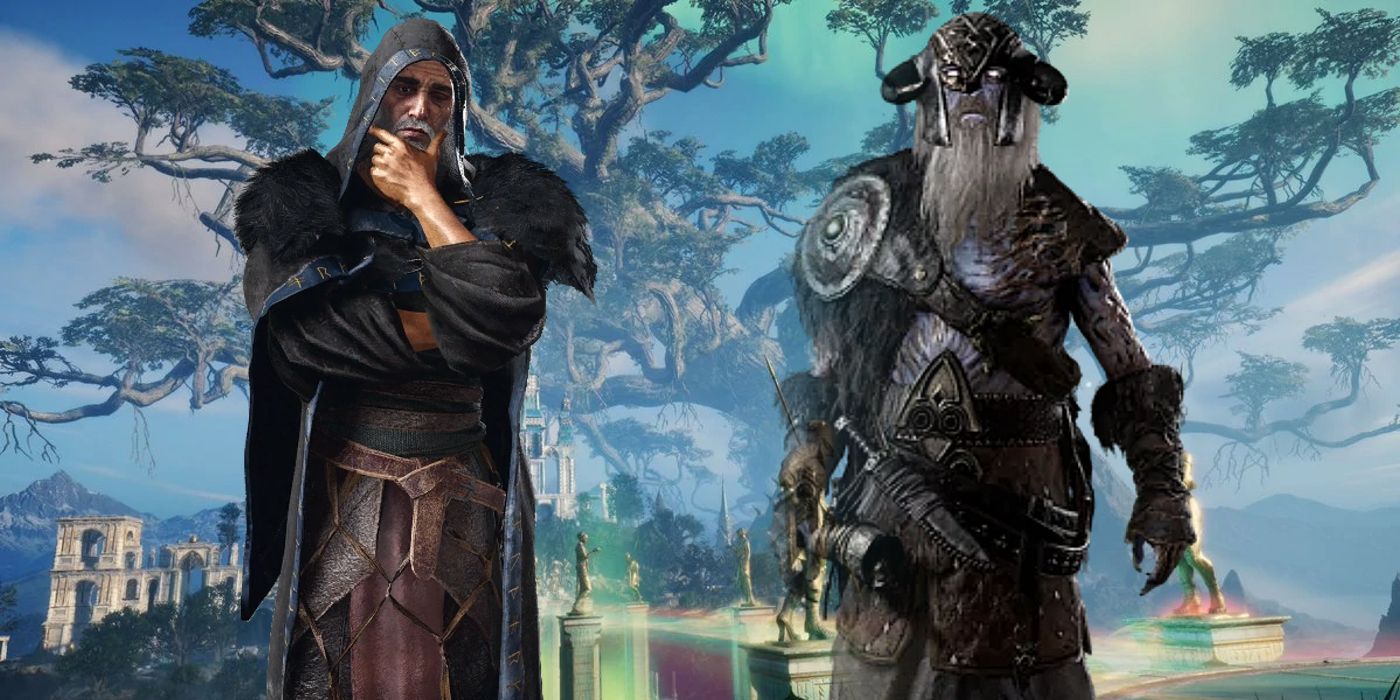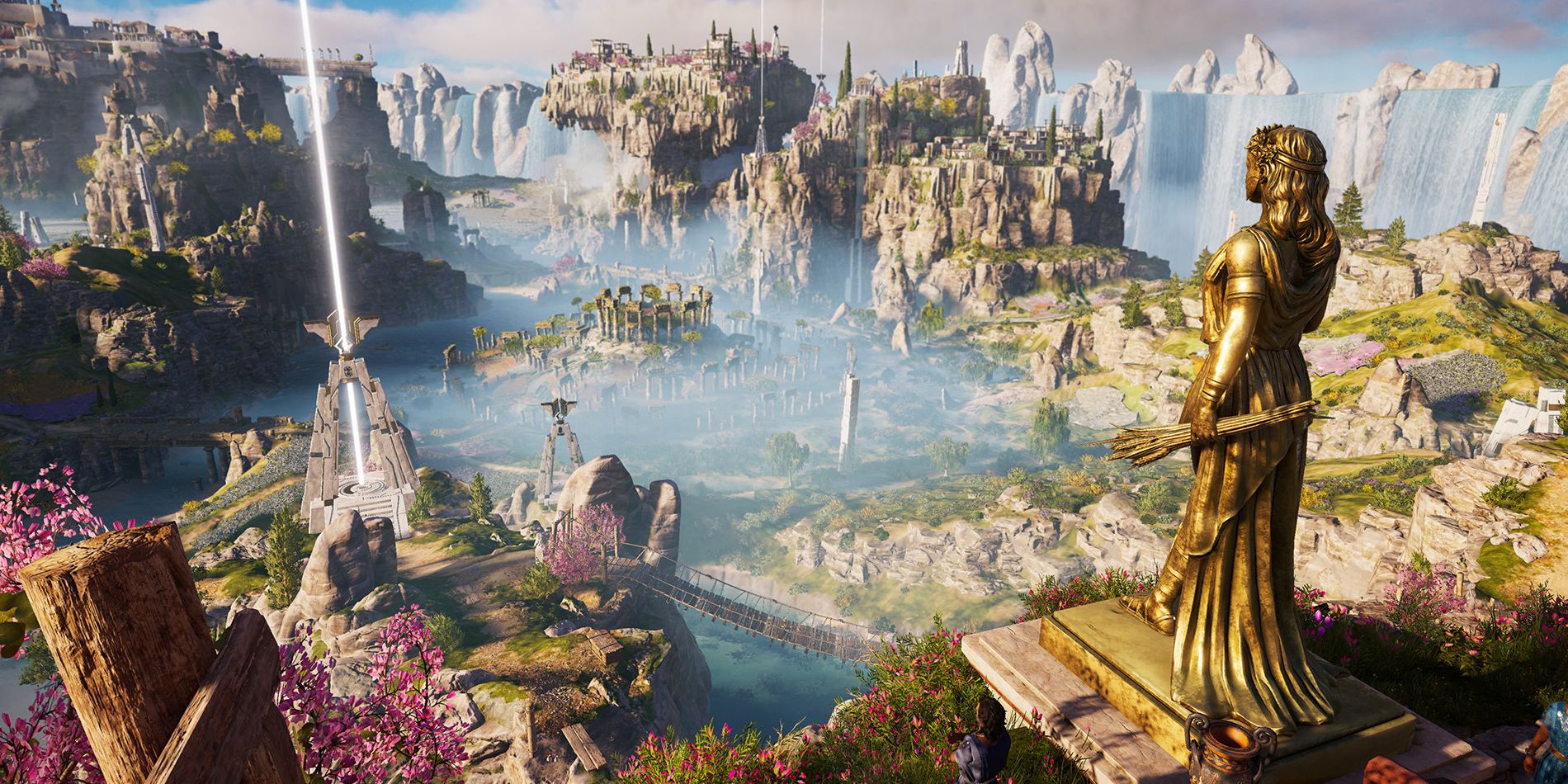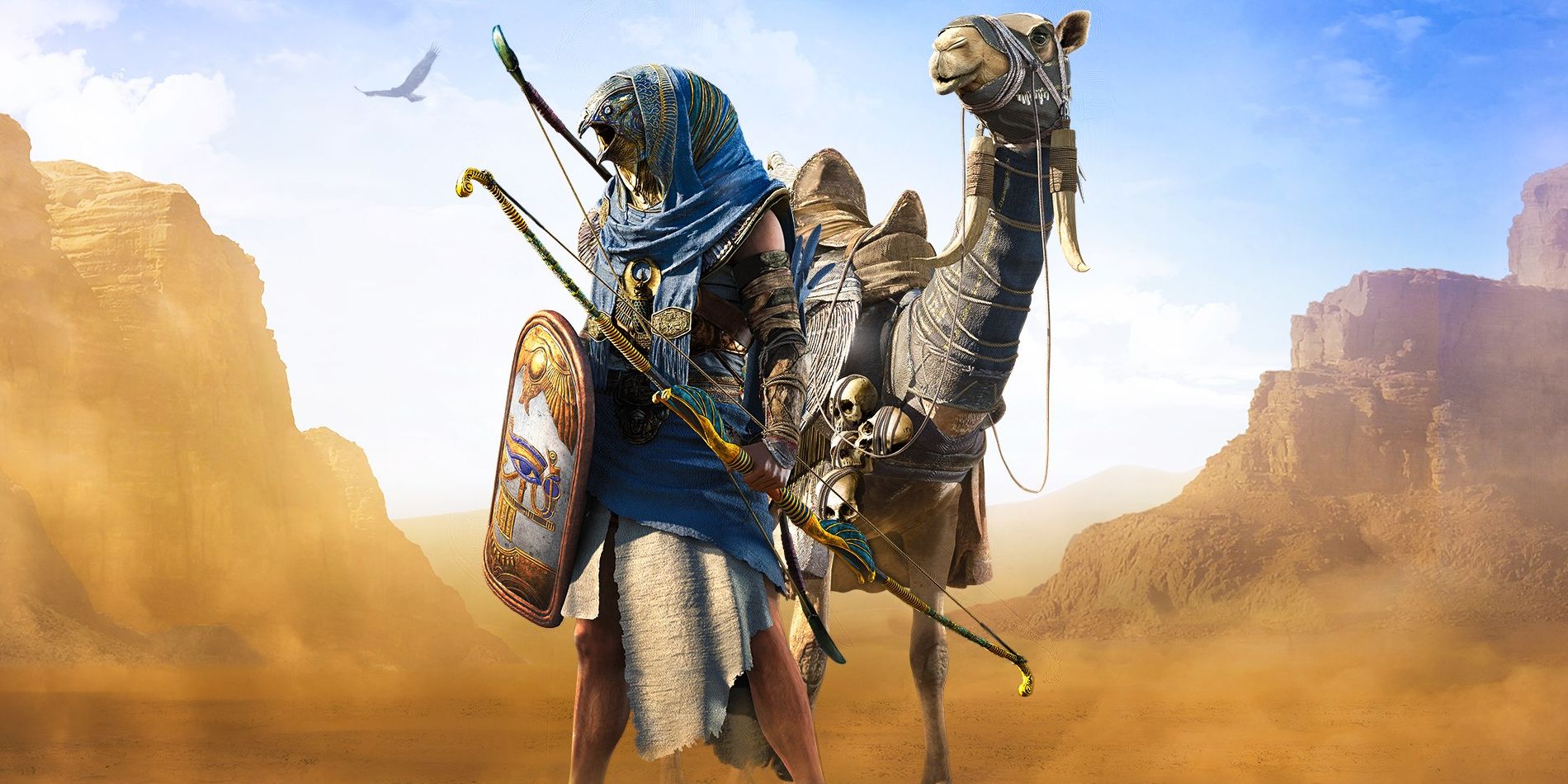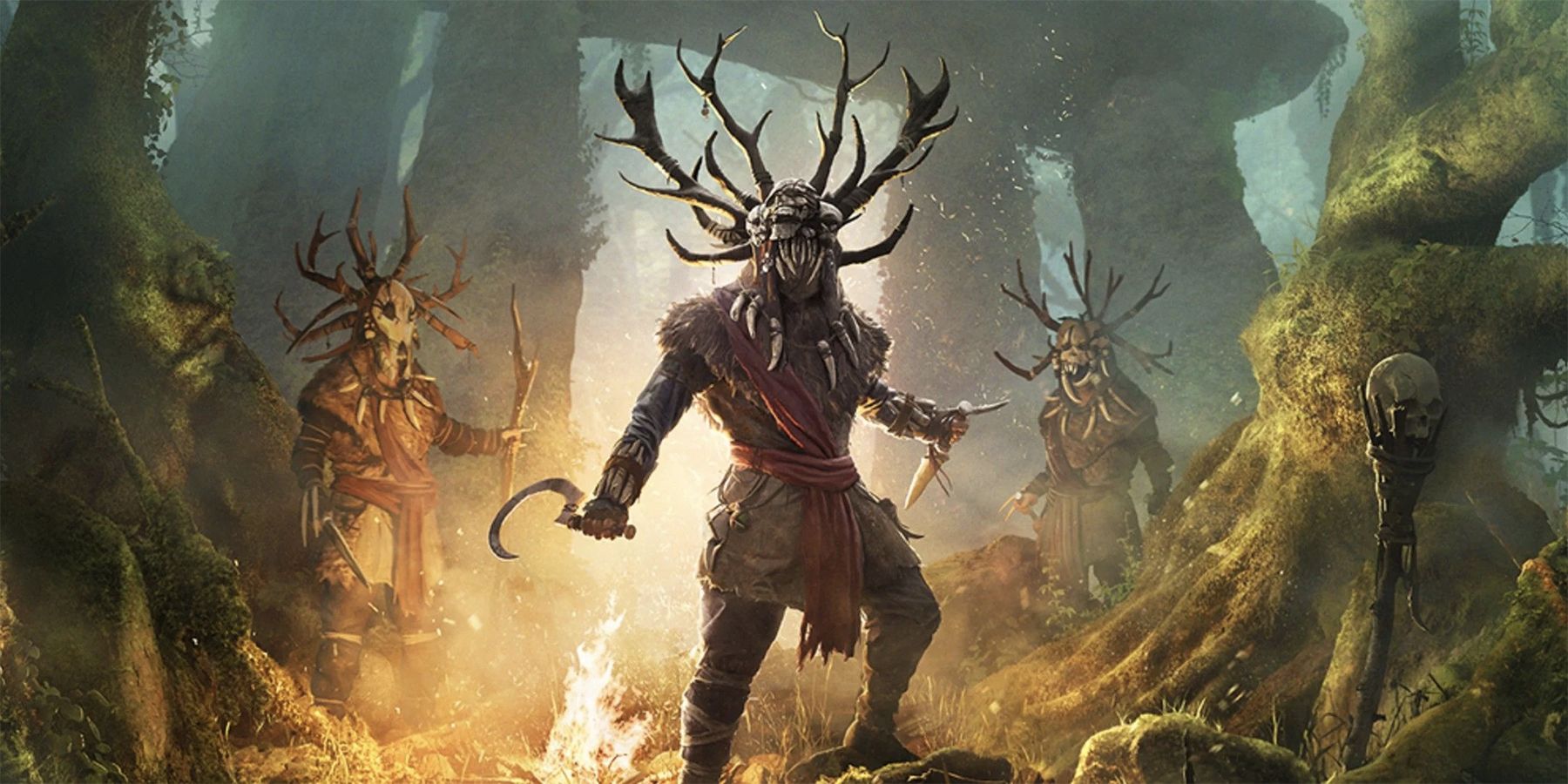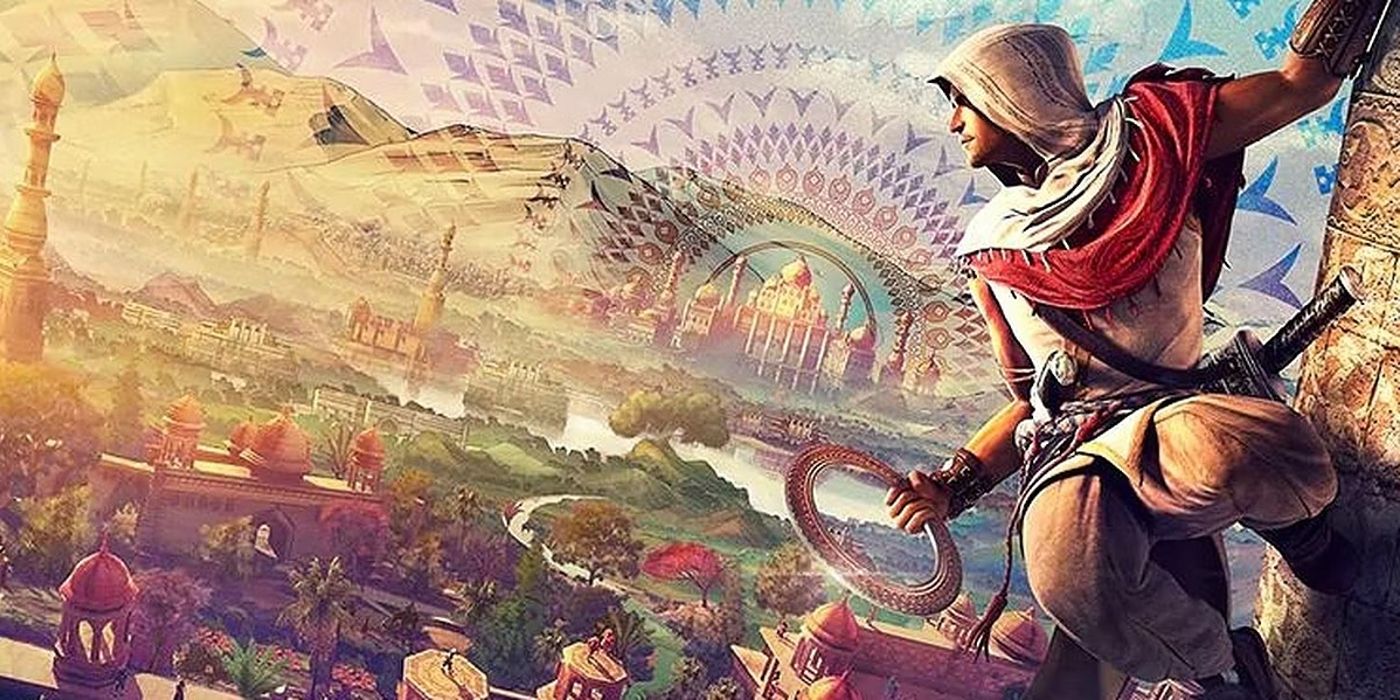The Isu were the highly advanced precursor civilization in the Assassin's Creed series that were responsible for making the Pieces of Eden, creating humanity, and leaving messages behind to help save the Earth from destruction. There are different factions of the Isu that were recognized throughout history as Gods in Roman, Egyptian, Norse, and other mythologies. There isn't much known about the origins of the Isu, but there are a number of beings that influenced history and some of the major events and characters in Assassin's Creed.
The Isu made humanity in their image but created them by genetically altering a hominid species to ensure their obedience. Humans were created and used for slave labor, and Neanderthals were made to be a military force. Eventually, a human rebellion formed, plunging the world into war, which distracted the Isu from the impending threat of a coronal mass ejection from the sun. After the Great Catastrophe, most of the Isu were gone either right away or shortly after.
The Isu were mentioned as early as the first Assassin's Creed. However, the first appearance occurred in Assassin's Creed 2 when a projection of Minerva spoke to Ezio in the Vatican Vault. With the latest release, Assassin's Creed Valhalla, the Gods from Norse mythology, and a few from the Celtic pantheon, were added to the list of known Isu.
The Greek, Etruscan, & Roman Pantheons Include The Most Significant Isu In Assassin's Creed
The Gods that make up the Greek, Etruscan, and Roman pantheons are some of the most significant and frequently mentioned Isu of the precursor civilization in Assassin's Creed. Many of them have different names depending on which religious group they're recognized by. However, each of the different names represents the same Isu figure. Among these Isu, Minerva and Juno influence the series' plot the most. Minerva left messages throughout history for humanity to find in the hopes that she could help them avoid the Second Catastrophe. Juno sought to return after the Great Catastrophe to rule over humanity.
Some of the Isu, like Minerva, Jupiter, and Juno, appear in multiple pantheons mentioned in the series, even making appearances as Jötnar in Norse mythology. During the Second Catastrophe, Desmond Miles interacted with both Minerva and Juno as they argued whether or not he should save the Earth. Juno had manipulated the Eye, Minerva's device for saving Earth, so that it would set her free when activated. Juno tried to convince Desmond in Assassin's Creed 3 to save the world so she could escape her prison. Minerva wanted Desmond to let the world burn rather than touch the Eye and set Juno free. Ultimately, Desmond decided that saving the world was worth the risk of releasing Juno.
Although Minerva, Juno, and Jupiter are the most mentioned Isu, there are other Greek, Etruscan, and Roman Gods that pop up throughout the series. Gods like Aletheia and Aita play larger roles in some titles, such as Assassin's Creed Odyssey and Assassin's Creed: Black Flag respectively. Many others are mentioned in passing through emails, notes, or other lore-enriching objects across the series.
- Aita
- Aletheia
- Aphrodite/Venus
- Charon
- Consus/Prometheus
- Demeter
- Eris
- Hades
- Hebe
- Hekate
- Hephaistos
- Hermes Trismegistus/Mercury
- Persephone
- Iris
- Juno/Hera/Uni
- Jupiter/Zeus/Tinia
- Minerva/Athena/Merva/Mera
- Phanes
- Saturn
- Tunguska Entity
Assassin's Creed Valhalla Introduced The Norse Pantheon Isu
The Norse Gods in Assassin's Creed Valhalla were also members of the Isu society, and there were a lot of them mentioned throughout the game. Technically, this latest installment is the first game in the series that lets players control an Isu character. However, the Odin that's playable in Valhalla is part of Eivor's vision, which is not completely historically accurate. Still, it's the first time the series actually depicts an Isu society that can be explored while controlling one of their own.
Odin is a major part of the story, but Loki is arguably the most significant Isu in the title because of the role he plays in the fate of the present-day protagonist in Assassin's Creed Valhalla. Other major appearances include Minerva, Juno, and Jupiter as Jötun, and Odin's closest companions, such as Heimdall, Freyja, and Týr. The Norse pantheon introduced the largest number of Isu in any one Assassin's Creed game, and it showed how these particular Gods attempted to survive the Great Catastrophe. Using a highly advanced Isu machine, Odin and a select few Isu uploaded their memories in the hopes of being reincarnated as one of the survivors of the Great Catastrophe. This concept plays a major role in how the fates of Eivor and Layla.
- Andhrímnir
- Angrboða (Alethia)
- Baldr
- Búri
- Einar
- Eysa
- Fenrir
- Freyja
- Freyr
- Frigg
- Fritjof
- Glöð
- Gunlöð (Minerva)
- Gunborg
- Heimdall
- Hel
- Hyrrokin (Juno)
- Iðunn
- Ivaldi
- Jörmungandr
- Loki
- Njörðr
- Odin
- Sif
- Sigyn
- Sinmara
- Skulð
- Surtr
- Suttungr (Jupiter)
- Thor
- Tyra
- Týr
- Ullr
- Urðr
- Vé
- Verðandi
- Vili
- Völund
Atlantean Pantheon Isu History Was Found By Kassandra In Assassin's Creed Odyssey
The Isu society of Atlantis is explored in Assassin's Creed Odyssey, where Kassandra discovered Pythagoras, her biological father, as well as the Staff of Hermes. When the Isu were thriving, the power-hungry Poseidon ruled over Atlantis after taking the throne from his son, Atlas. Atlantis was meant to be an indestructible fortress where knowledge was kept and Isu and humans lived together. Poseidon was a strict and unforgiving ruler that demanded perfection and implemented a system that would destroy Atlantis so it could be rebuilt every seven years if it was deemed to be imperfect. The process of starting over would wipe the individuals residing in Atlantis from existence.
- Ampheres
- Atlas
- Autochthonos
- Azaes
- Diaprepes
- Elasippos
- Evaimon
- Gadiros
- Melitta
- Mestor
- Mneseas
- Neokles
- Poseidon/Neptune
- The Foreman
- The Harbormaster
- Xarios
Assassin's Creed Origins Detailed The Egyptian Pantheon Isu
The Isu, who were later known as the Egyptian Gods posthumously, were mentioned throughout Assassin's Creed Origins. Some of the lore was also expanded upon in Assassin's Creed Valhalla by Reda, the shop keeper that travels to Ravensthorpe. The Isu that were considered to be Egyptian Gods left behind messages for humanity in Temples built around Egypt. Before the Great Catastrophe, Isis used the Ankh, one of the Pieces of Eden, to protect Egypt and eventually resurrect Osiris after his passing. The resurrection lasted for one night only, but it led to the birth of Horus. The majority of the known Isu that come from Egyptian mythology are actually unidentified messengers that, after the Great Catastrophe, hid communications for Layla Hassan to find.
- Amun Amunet messenger
- Horus
- Isis
- Khnum and Hequet messenger
- Khufu messenger
- Nomarch messenger
- Osiris
- Seth
- Seth Anath messenger
The Celtic Pantheon Isu Were Mentioned Briefly In Assassin's Creed
Assassin's Creed Valhalla's Wrath of the Druids DLC included some lore about Isu that were remembered as Celtic Gods, though it was scarce. A few Gods were identified, including Sulis, who is the same entity that goes by Minerva, Athena, and a few other names. The other Celtic Gods mentioned include Lug, Mórrígan, and Nodens, who left messages in the structure beneath Stonehenge that the present-day Assassins were able to decipher with the help of a linguist named Antony Henry. There isn't much else known at this time about the Isu that posthumously showed up in Celtic mythology.
- Lug
- Mórrígan
- Nodens
- Sulis (Minerva)
Other Known Isu In Assassin's Creed
There are a few other known Isu mentioned in books, spin-off Assassin's Creed games with different settings, or in passing in one of the main titles. These other Isu are credited with certain contributions to religions like Buddhism and Hinduism. Saklas, Samael, and Yaldabaoth were a trio of Isu that were responsible for the early stages of Project Anthropos, which was the creation of humanity. Although these Isu aren't mentioned much, they still play a significant role in the documented history of humanity in Assassin's Creed.
- Buddha/Shakyamuni/Siddhārtha Gautama
- Durga
- Saklas
- Samael
- Yaldabaoth

